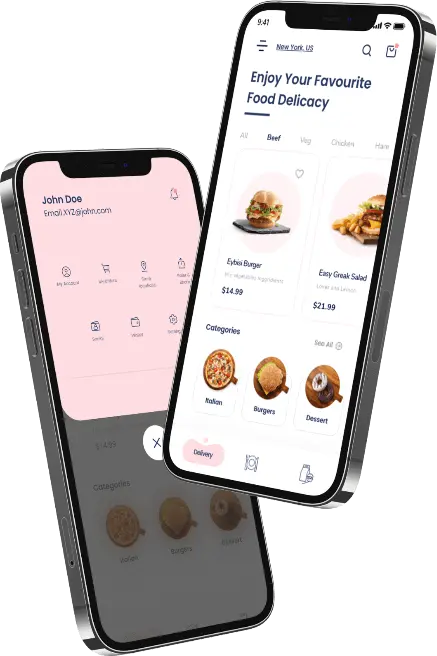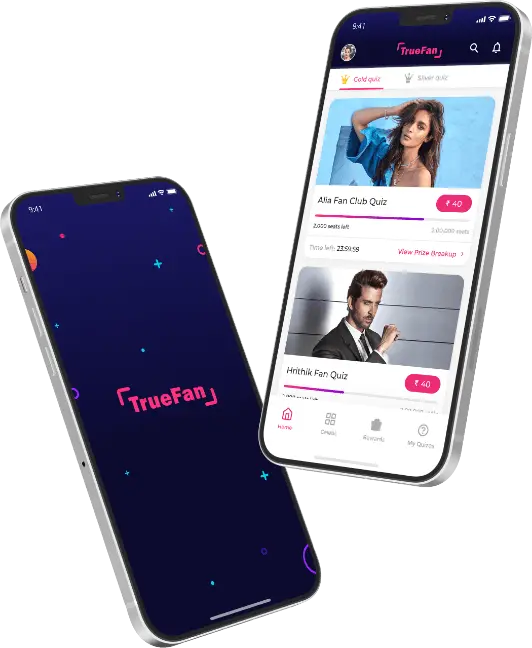26 Dec 2022
Build Money Transfer App: Everything You Need to Know!
Surbhi Bhatia

A majority of Americans use smartphones to conduct digital payments. These number of users are growing and have surpassed 200 million. Analysts predict that by 2022, 52.5 percent of smartphone users will be able to perform at least one monetary transaction per month in the U.S. Money transfer platforms are rapidly growing in popularity because they allow for fast and easy operation processing. If you’re interested in this niche, now is the time. Techugo- a top-notch app development team is an expert in creating functional payment systems. We’re sharing information on money transfer apps and a step-by–step guide for creating one.
Types and Business Models for P2P Payment Apps
You need to be familiar with the different types of products you will use to create a payment app for P2P. First, you must decide on a business model. This will help you decide which type of app you want. We will now tell you all about the options.
1. Standalone vendors
The app allows users to link their bank accounts. To store and make payments, send money, as well as receive it, users can create a digital wallet. People can also keep their money in their wallets, even if they don’t wish to transfer it to a bank account.
PayPal is a popular app that provides payment solutions and services for individuals and businesses. You can shop, transfer money and make payments. PayPal allows businesses to expand into new markets, find buyers and increase conversions across all channels. Statista reports that 416 million people used the product in the third quarter of 2021.
2. Mobile OS Centric Services
Similar apps can be installed on smartphones by users who also add their bank cards to them. They can then pay for their smartphones, wristbands, and smartwatches in stores that have NFC technology.
Apple Pay allows people to buy products online and no longer require a bank card. The app also protects the personal data of users when they purchase. Apple Pay is an additional payment option that businesses can use to increase revenue. Apple Pay is integrated into the iPhone, Apple Watch, and iPad.
3. Services geared toward banks
One of the third parties involved in transaction execution is banks. To make it easier and more convenient to use their services, banks often create P2P payment networks. As a result, people can send money to pay for many services, including utilities, mobile bills, fines, and insurance.
Users in the US can also send and receive money using Zelle, provided that both the sender and recipient banks have integrated Zelle into their banking apps. These transfers can be made in minutes. Banks in the USA are therefore interested in Zelle as a part of their solutions.
4. Social Media Platforms
To chat with friends, people can send money to social networks. Some solutions also offer additional features. WeChat users can use WeChat to pay online for goods and services, pay bills, buy tickets and call and pay for taxis. They can also book hotels and make reservations.
You can use Facebook Pay in certain countries. Facebook Messenger, Instagram, and WhatsApp allow users to add their payment information. Users can send money to their friends, purchase goods and donate funds. You could also integrate an existing social networking site.
Also Read – Why do you need a winning social media strategy?
The Modern P2P-Transactions: Market Trends for Money Transfer Apps
Some p2p apps recently added business payment options to their app, effectively making p2p (peer-to–business) more profitable. This is definitely a trend with payment apps. We’ll talk about it below. But first, leWhy do you need a winning social media strategyt’s take a look at the various types of p2p payments apps currently in existence:
1. TRADITIONAL MOBILE BANKING APPS
You can send money to friends and family using Wells Fargo, Chase Mobile, or any other mobile app from a bank, credit union, or bank. These p2p apps are sometimes called “bank-centric” but they are not bank-owned.
A p2p feature is a convenient option, but it’s not a necessity, especially for people who transact with a bank in another institution.
2. STANDALONE PAYMENT Apps
Venmo and Cash App are digital products that focus on payments. They often include a debit card or connect to an existing account. These digital solutions are designed to give users more control over their money.
While they may offer different benefits, the basic idea is that we can transact easily with trusted people using built-in electronic wallets. You can add existing accounts to create new ones.
3. PAYMENT PLATFORMS
Zelle is the dominant player in this market. Although the product is primarily a mobile app, it’s actually quite simple. Zelle offers more than just mobile software for real-time payments.
Zelle, first and foremost, is a platform that has a strong backend and APIs that allows interbank electronic money transfers between individuals from their online banking apps.
4. CRYPTO APPLICATIONS
Every crypto wallet app can be used as a p2p application that allows people to send and get crypto for cross-border transactions. However, you will still need to spend time searching for a p2p crypto payment app that is as simple and elegant as Venmo or PayPal.
You have a lot of work to do because each crypto coin and the token has a unique address. To send funds, you will still need to use QR codes to make payments or enter long strings (without 100% recipient verification).
What must-have features are there in a money transfer app for iOS?
Money transfer apps offer a range of useful features that can benefit both businesses and consumers.
These apps make it easy to send money quickly to family members, friends, and other contacts.
You can also pay your bills, buy airtime or make an in-app purchase – all to save you the hassle of having to spend time paying bills in person. These are the most important ones.
1. Ewallets
An e-wallet, as mentioned, allows users to store and perform transactions.
2. Payments for bills
A customer-centric money transfer app also allows you to manage your phone top-ups and utility bill payments online with just a few clicks. This feature can be added to your application to make it more appealing to customers and give you a competitive edge.
3. Tracking expenses
This feature is valuable because it helps users better manage their finances. As a result, it basically allows you to visualize all transactions and group them by status, volume, or location. Your customers will experience a better user experience and can optimize their spending.
4. International remittance
Your users can transfer money internationally or receive money overseas in minutes.
5. Exchange of currencies
This feature allows your users to send and get different currencies as well as exchange currency between accounts.
6. Online ID checks
Online ID checks are common on money transfer apps as they protect both the receiver and the sender. Both the sender and receiver can rest assured that their information has been sent securely. This helps to avoid fraud and scams. Online ID checks and money transfer apps offer both parties convenience – there is no need to meet up in person or exchange numbers.
7. Multilingual interface
Startups might find a single interface sufficient. However, at later stages it may be worth adding multiple languages to accelerate product growth and expand internationally.
8. Customer support
A good customer support system will usually include live chat, email support, or telephone support. Online chats are the best option, as customers can get immediate support through the chat.
The benefits of using a money transfer app
A money transfer app has many benefits, including:
- Convenience – You can work from anywhere, at any time. As long as there is an internet connection.
- Efficiency
It’s faster to manage your finances online than to visit a bank branch. - Security
Online banking is generally more secure than offline banking if you take precautions to protect account information, such as using strong passwords and avoiding phishing scams. - Save Money
It can save you money. Traditional methods of sending money such as wire transfers are often expensive. A transfer app allows you to send money free of charge or at a very low cost. - Send Money Anywhere
With just a few taps of your smartphone, you can send money anywhere in the world. This is far more convenient than having to go to a physical location for this task.
With its many features and services, this application has made life easier. It’s fast and easy. It takes just a few clicks to send or receive money from any part of the world. It allows people to send money to loved ones directly without having to go through banks or other financial institutions. It’s safe and secure. It is safe and secure. It’s easy to use. It can be used to send and receive money without worrying about exchange rates. It is also reliable.
How to Create a Money Transfer App?
1. Call a Mobile Payments App Development Agency before you call
There are many things to do before you can actually start building a p2p app. The first step is to define your strategy.
– STRATEGIZE AROUND THE BUSINESS MODEL
Market research is essential for any product, digital or otherwise. You need to study your target audience, find their unique needs, and determine the context in which they will use your solution. This will allow you to refine your selling proposition and pinpoint the right product-market match.
Don’t forget to ask questions such as:
- – Who will use your application?
- – In what context and when will they refer to your product?
- – How can you make your solution monetizable?
– REGULATORY REQUIREMENTS
– PARTNERSHIPS
– DEVELOPMENT PARTNER
2. Design the App’s Architecture
The next two steps that I’ll describe are actually performed simultaneously in practice. There is nothing to stop you from designing the app’s user experience and defining its architecture.
Pay attention to the following key points:
– Who orchestrates P2P App’S architecture?
– How does it really work?
3. Create the App’s UX/UI
Next comes rapid prototyping. It is important to create an interactive graphical shell for your app so everyone can see it and understand its functionality. It is possible to simultaneously create the UX/UI and scope architecture.
4. Behind-the-scenes P2P App Development
You should now have:
- Canvas lean
- Polished design
- Architecture blueprints that have been well-researched
Now you are well-positioned for money transfer app development. Let me show you how it looks from the inside, instead of complaining about how boring this step can be for business owners.
5. Now What?
When creating a money transfer app, most business owners don’t think about it much after releasing a product. The funny thing is that the party ends once your p2p application has been released.
Based on feedback from users, you’ll be able to spot potential opportunities for improvement. This could be as simple as changing user flows or adding new features (e.g., a borrowing request option).
Second, Apple and Google will release new versions of their mobile OS at some point. This will allow your software to make use of new options.
Simply put, the development of successful products never stops. Behind the scenes, developers, testers, and designers keep creating new versions. Mobile experts argue that app success is determined by how often an app is updated.
Before you develop a money transfer app, here are some important points to remember
Apart from the development challenges, there are many other factors that you must consider when entering or working in the fintech industry.
Also Read – Why should businesses invest in Fintech Apps?
1. Compliance with regulations
A remittance app, unless it is a mobile banking application, is not considered a bank institution. However, it is still subject to regulations regarding dealing with finances. The regulations are different in each jurisdiction, so the app must comply with all fintech standards wherever it will be operating.
What does the SDK.finance platform do to address compliance issues?
SDK.finance platform is compliant with all regulations as it acts as a layer in a customer’s systems and can be used according to license. The system does not store any data, and the database is located on the customer’s server. SDK.finance provides only the backend app at one of the cloud service providers.
2. Security
Money transfer apps not only allow you to transfer money but also provide reports on the transactions that were performed. Security is a key concern for applications in the fintech sector. Strong data protection techniques are the best way to protect your customers’ money and prevent fraud.
These are some of the best ways to protect your money transfer app.
- Two-factor authentication
- Change password on a timetable
- Compliance with PCI DSS (if you deal in cards)
- Third-party identity verification services can be used for anti-money laundering (AML), and “Know Your Customer (KYC), procedures.
- Data encryption, session time limits and backups are all possible.
To Sum Up!
After deciding on the app’s requirements, you can weigh the pros and cons and select software vendors or outsourcing partners that will assist you in building a project roadmap to take your app from concept to launch.
What are you waiting for?
For further assistance, contact us today!
Get in touch.
Write Us
sales@techugo.comOr fill this form















